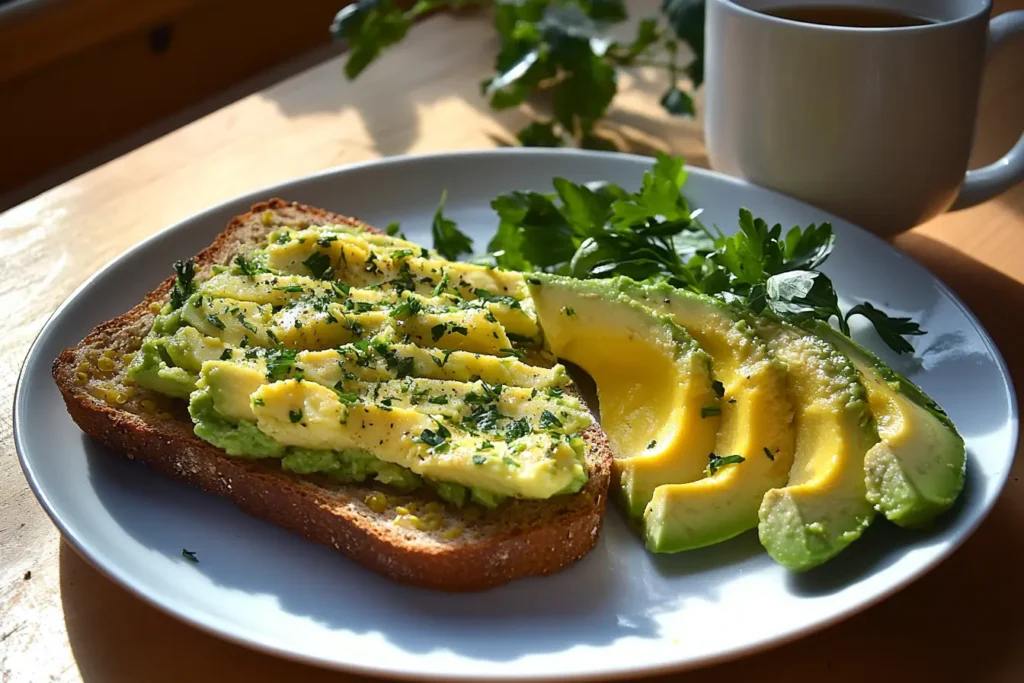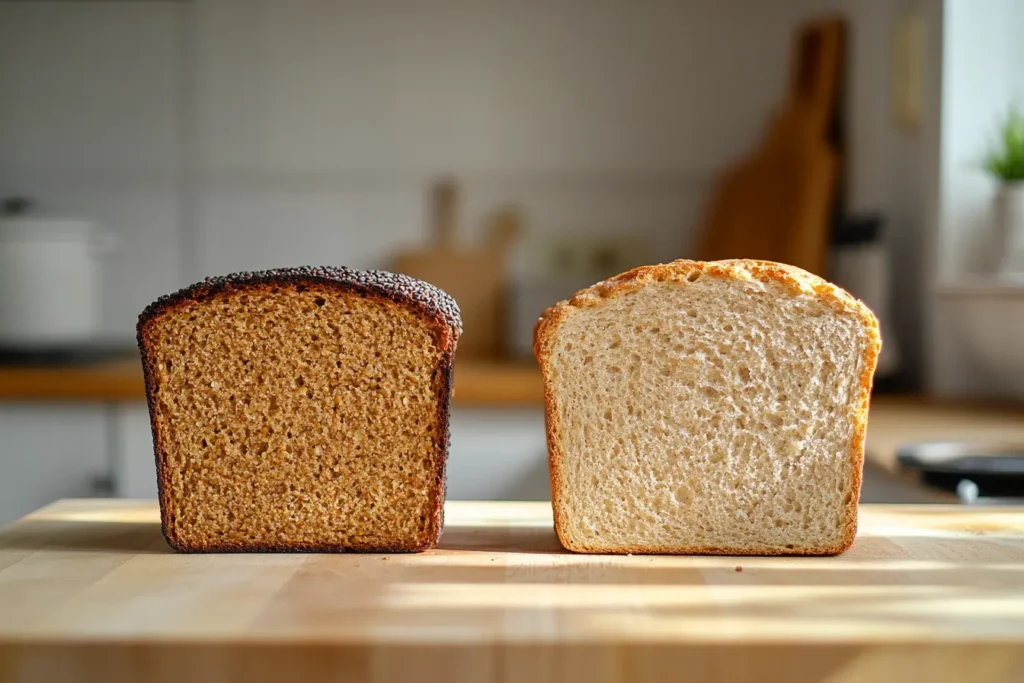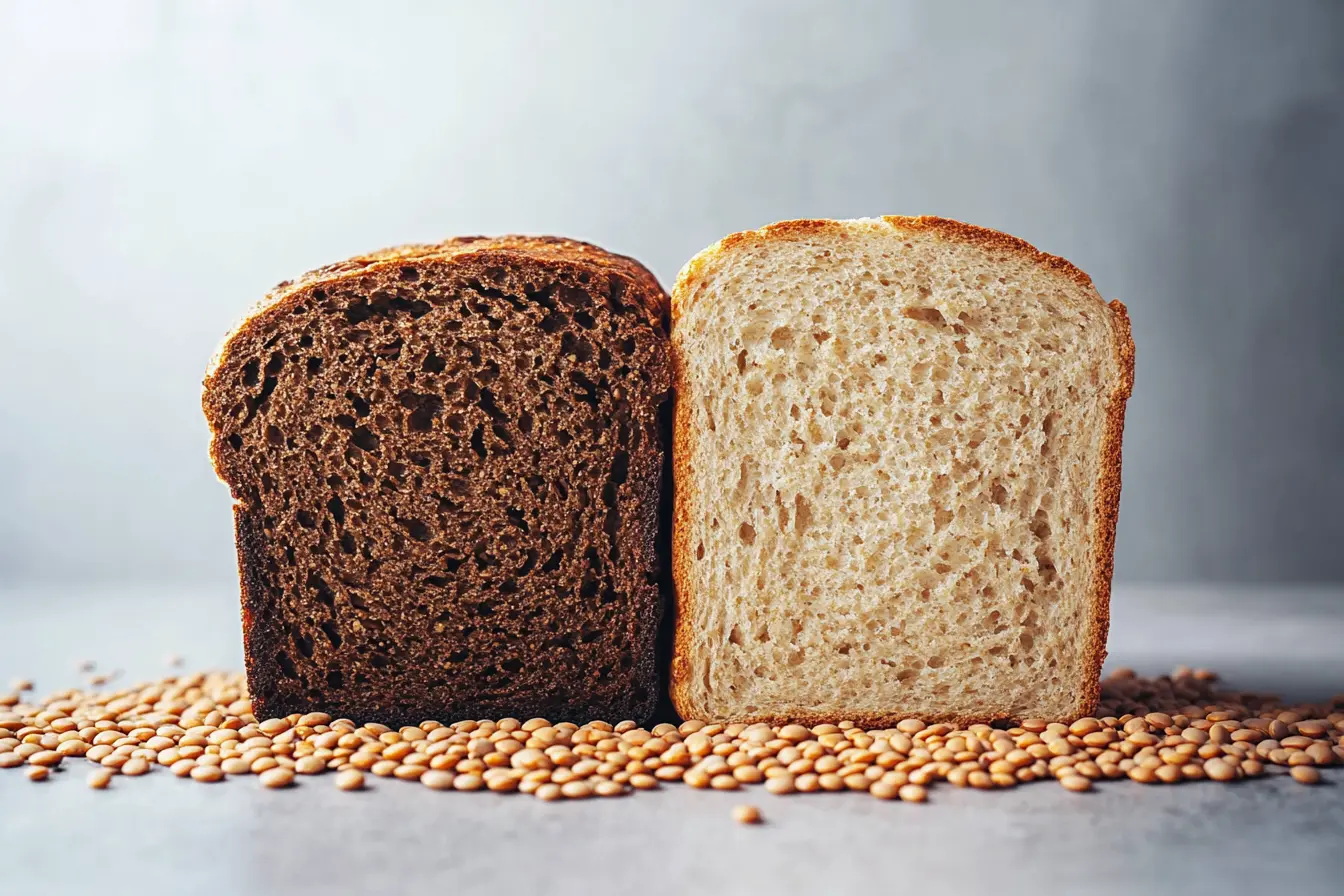Introduction
Lentil bread has gained significant popularity in recent years as a nutritious alternative to traditional wheat bread. This versatile bread offers unique benefits, but one common question lingers: is lentil bread high in carbs? Understanding its nutritional profile, health implications, and place in various diets requires a closer look. This article explores the carbohydrate content, glycemic index, and overall impact of lentil bread on your health, including its suitability for low-carb lifestyles. Let’s dive in!
Understanding Lentil Bread
What is Lentil Bread?
Lentil bread is a gluten-free alternative crafted from lentil flour, which is derived from ground lentils. Often praised for its rich protein content, high fiber, and essential nutrients, it’s a favorite among those with dietary restrictions or preferences. Whether baked at home or purchased pre-made, lentil bread boasts a unique, slightly nutty flavor that complements a variety of meals.
Popularity and Usage in Various Diets
The rising demand for plant-based and gluten-free options has put lentil bread on the radar of health-conscious consumers. It’s especially appealing to those adhering to vegetarian, vegan, or celiac-friendly diets. Additionally, many fitness enthusiasts include it in their plans due to its nutrient density and low glycemic impact.
Nutritional Profile of Lentils
Lentils, the core ingredient of this bread, are packed with nutrients that support overall health. Here’s a breakdown:
- Macronutrient Composition: Lentils are rich in complex carbohydrates, but they also offer a generous amount of protein and fiber, making them a filling and balanced food choice.
- Vitamins and Minerals: They’re an excellent source of B vitamins, iron, magnesium, and potassium, which contribute to energy production, improved blood circulation, and muscle health.
For detailed insights into lentil nutrition, refer to this resource on lentils’ nutritional information.
Carbohydrate Content in Lentils
It’s no secret that lentils contain carbohydrates, but not all carbs are created equal. Lentils are high in fiber, which means their net carb content—the digestible carbs that impact blood sugar—is much lower than their total carb count. The fiber slows digestion, helping to maintain stable energy levels throughout the day.

In the next installment, we’ll explore how lentil bread is made and its specific carbohydrate content. Stay tuned for an in-depth analysis!
Lentil Bread and Carbohydrate Analysis
How Lentil Bread is Made
The journey from humble lentils to lentil bread involves a straightforward but fascinating process. Typically, lentil flour—made by grinding dried lentils into a fine powder—is the main ingredient. Additional components like water, salt, and sometimes natural binders such as psyllium husk or flaxseed are mixed in to achieve the desired consistency.
For a smoother texture and enhanced flavor, some recipes include olive oil, herbs, or spices. Unlike traditional bread, lentil bread doesn’t rely on yeast for leavening, making it a denser and gluten-free option. Each variation affects the carb content slightly, but the absence of refined flours or sugar often keeps it lower in carbs compared to traditional bread.
Carbohydrate Content in Lentil Bread
The big question: is lentil bread high in carb? The answer depends on how you look at it. Here’s a breakdown:
- Total Carbohydrates: Lentil bread generally contains moderate amounts of carbs, with one slice averaging around 15-20 grams of total carbs.
- Net Carbs: Subtracting fiber content (5-7 grams per slice) leaves net carbs significantly lower than that of traditional bread, often landing between 8-13 grams.
This reduced net carb content makes lentil bread a viable option for those monitoring their carb intake. However, it’s important to note that different recipes or commercial variations may have slight differences.

Impact of Additional Ingredients on Carb Levels
The inclusion of added sugars, honey, or sweeteners in some versions can elevate the carb count. Conversely, using low-carb ingredients like almond flour as a blend with lentil flour may decrease it further. If you’re baking at home, the ingredient list offers full control over the carb content, ensuring it aligns with your dietary goals.
Comparison with Traditional Wheat Bread
Traditional wheat bread typically contains 20-25 grams of total carbs per slice and only 1-2 grams of fiber, leaving a much higher net carb count. For individuals aiming to lower their carb intake, lentil bread is clearly the more favorable choice.
Transitioning to the subsequent portion, we’ll examine the glycemic index of lentil bread and how it impacts blood sugar levels. Let’s keep unraveling the story!
Exploring the Glycemic Index and Recipe for Lentil Bread
Glycemic Index of Lentil Bread
The glycemic index (GI) measures how quickly foods raise blood sugar levels. Lentils, the primary ingredient in lentil bread, boast a low GI score, typically ranging between 20 and 30. This makes them an excellent choice for maintaining steady blood sugar levels. When transformed into bread, the GI remains relatively low due to the high fiber content and the absence of refined sugars.
Lentil bread’s low glycemic impact is a boon for individuals with diabetes or those looking to stabilize their energy throughout the day. By choosing this bread over traditional high-GI options, you can better manage your blood sugar and curb cravings.
Recipe for Homemade Lentil Bread
Making lentil bread at home is a simple and rewarding process. You’ll know exactly what’s going into it, ensuring it meets your dietary needs. Let’s get started!

Ingredients:
- 2 cups of dried red or green lentils (soaked overnight)
- 1 cup of water
- 2 tablespoons olive oil
- 1 teaspoon salt
- 1 teaspoon baking powder
- 1 tablespoon flaxseed meal (optional, for binding)
- Optional: herbs or spices like rosemary, thyme, or garlic powder
Instructions:
- Prepare the Lentils
- Rinse the soaked lentils thoroughly to remove any debris or residue. Drain well and transfer to a blender or food processor.
- Blend the Mixture
- Add water, olive oil, and salt to the blender. Blend until smooth, creating a thick batter-like consistency.
- Incorporate the Dry Ingredients
- In a bowl, mix the baking powder and flaxseed meal (if using) with the lentil mixture. Stir until well combined.
- Enhance the Flavor
- If desired, add herbs or spices to the batter. This step allows you to customize the flavor profile of your bread.
- Prepare the Baking Pan
- Line a loaf pan with parchment paper or lightly grease it to prevent sticking. Pour the batter into the pan, spreading it evenly.
- Bake the Bread
- Preheat your oven to 375°F (190°C). Bake the bread for 45-50 minutes, or until the top is golden brown and a toothpick inserted in the center comes out clean.
- Cool and Serve
- Allow the bread to cool in the pan for 10 minutes, then transfer it to a wire rack to cool completely. Slice and enjoy!
Nutritional Content (Per 100g)
Below is the nutritional breakdown of homemade lentil bread, providing a detailed look at its macros and micronutrients:
| Nutrient | Amount |
|---|---|
| Calories | 180 kcal |
| Carbohydrates | 25 g |
| Fiber | 8 g |
| Protein | 9 g |
| Fat | 3 g |
| Iron | 2.5 mg |
| Potassium | 370 mg |
In the following segment, we’ll examine the health implications of lentil bread’s carb content and its role in a low-carb diet. Let’s uncover more benefits!
Health Implications of Lentil Bread’s Carb Content
Lentil Bread in Low-Carb Diets
One of the burning questions is whether lentil bread fits into a low-carb diet. While it does contain carbohydrates, the high fiber content significantly reduces its net carbs, making it a practical choice for many low-carb enthusiasts.
For instance, if you’re on a ketogenic diet, the fiber in lentil bread can help offset its carb load, allowing you to indulge occasionally. By carefully monitoring portion sizes and pairing it with high-fat or low-carb toppings like avocado or cheese, you can enjoy lentil bread without compromising your carb goals.

Portion Control and Carb Management
Managing portions is essential when including lentil bread in a low-carb or diabetic diet. One slice (approximately 60-70g) contains around 8-13g of net carbs, which is considerably lower than traditional bread. However, overeating can quickly add up the carb intake. Pairing it with non-starchy vegetables or lean proteins ensures you stay within your dietary limits.
Impact on Blood Sugar Levels
Thanks to its low glycemic index and high fiber content, lentil bread provides a slow and steady release of glucose into the bloodstream. This feature is especially beneficial for people with diabetes or insulin resistance. Instead of spiking blood sugar levels, lentil bread helps maintain balance, preventing the dreaded post-meal crash.
Benefits for Individuals with Diabetes
Lentil bread is particularly appealing to individuals managing diabetes for several reasons:
- Low Glycemic Index: Reduces the likelihood of sugar spikes.
- Rich in Fiber: Helps improve insulin sensitivity and digestion.
- Sustained Energy: Provides long-lasting energy without sudden drops.
For additional details on how lentils impact blood sugar, refer to this resource on lentils’ effects on blood sugar.
Fiber Content and Digestive Health
The fiber in lentil bread doesn’t just lower net carbs—it also boosts digestive health. Fiber aids in regular bowel movements, prevents constipation, and supports gut microbiota. In turn, this improves nutrient absorption and overall well-being.
Advancing to the following area, we’ll delve into how lentil bread compares with traditional options and discuss its dietary versatility. The journey continues!
Comparative Analysis and Dietary Considerations
Lentil Bread vs. Traditional Breads
When it comes to comparing lentil bread with traditional wheat or white bread, there are several distinctions worth noting:
- Carbohydrate Content: Traditional bread often contains 20-25g of carb per slice with minimal fiber, while lentil bread boasts 8-13g of net carbs, thanks to its higher fiber content.
- Protein Levels: Lentil bread provides a richer protein profile, offering 7-9g per slice compared to 3-5g in wheat bread. This makes it a better option for those seeking plant-based protein.
- Healthier Fats: Lentil bread typically includes healthy fats from olive oil or flaxseed, whereas traditional bread often relies on processed oils.
- Nutritional Value: Lentil bread delivers vitamins and minerals such as iron, magnesium, and potassium, which are less abundant in conventional options.
Health Benefits and Drawbacks
Benefits:
- Supports blood sugar stability.
- Enhances digestive health through fiber.
- Provides a gluten-free option for individuals with celiac disease.
Drawbacks:
- Denser texture might not appeal to everyone.
- Shorter shelf life compared to store-bought bread due to the absence of preservatives.
Gluten-Free and Allergen Information
One of the standout features of lentil bread is its gluten-free composition, making it a safe and satisfying choice for individuals with celiac disease or gluten sensitivity. However, some recipes may include additional ingredients that could trigger allergies, such as flaxseeds or nut-based flour blends.
Always check ingredient labels or clarify recipes if allergens are a concern. Homemade lentil bread is an excellent way to ensure complete control over its content.
Incorporating Lentil Bread into a Balanced Diet
Including lentil bread in your meals is a breeze when you balance it with nutrient-dense foods:
- Breakfast Ideas: Pair lentil bread with avocado, eggs, or a plant-based spread for a nourishing start.
- Lunch Options: Use it as a base for sandwiches packed with lean proteins, like turkey or hummus with fresh veggies.
- Dinner Choices: Serve alongside soups, stews, or salads to round out your plate.
In the succeeding section, we’ll tackle frequently asked questions about lentil bread and provide final thoughts to wrap up this comprehensive guide!
Frequently Asked Questions
Are lentils better than bread?
Lentils and bread serve different purposes nutritionally. Lentils are rich in protein, fiber, and essential minerals, making them a powerhouse for overall health. Traditional bread, on the other hand, tends to be higher in refined carbs and lower in nutrients. Lentil bread combines the best of both worlds, offering the health benefits of lentils while serving as a versatile bread alternative.
What are the benefits of lentil bread?
Lentil bread offers numerous advantages, including:
- Low Glycemic Impact: Helps maintain steady blood sugar levels.
- High Fiber Content: Supports digestive health and improves satiety.
- Rich in Protein: Provides plant-based protein essential for muscle repair and growth.
- Gluten-Free: Suitable for individuals with gluten sensitivities or celiac disease.
- Versatile Usage: Perfect for sandwiches, snacks, or pairing with soups and salads.
Is lentil flour just lentils?
Yes, lentil flour is made by grinding dried lentils into a fine powder. It retains all the nutritional benefits of whole lentils, such as their high protein, fiber, and nutrient content. It’s a key ingredient in lentil bread and other gluten-free recipes.
What is the best way to cook diced chicken?
The best way to cook diced chicken depends on your recipe and preference, but here are some versatile methods:
- Stir-Frying: Heat a skillet with a splash of olive oil, toss in the diced chicken, and cook over medium-high heat until golden brown. Add vegetables and seasonings for a quick, balanced meal.
- Grilling: Marinate the chicken pieces in your favorite spices, then skewer and grill until cooked through, offering a smoky flavor.
- Baking: Place seasoned diced chicken on a baking sheet and bake at 375°F (190°C) for 15-20 minutes. This method is low-fat and hassle-free.
- Boiling: For salads or soups, boil the chicken in seasoned water or broth until tender, ensuring moist and flavorful results.
Is diced chicken healthy?
Absolutely! Diced chicken is an excellent source of lean protein, low in fat (especially when skinless), and packed with essential nutrients like B vitamins, selenium, and phosphorus. When prepared with minimal added fats and paired with nutrient-rich sides like vegetables or whole grains, diced chicken can be a staple in a balanced, healthy diet.
Conclusion
Lentil bread offers a unique and nutritious alternative to traditional wheat-based options. Its lower carbohydrate content, high fiber, and protein levels make it a standout choice for individuals seeking healthier bread options, whether for dietary reasons or general wellness goals. By combining the nutrient density of lentils with the convenience of bread, it provides the best of both worlds.
For those managing blood sugar levels or following a low-carb diet, lentil bread’s low glycemic index and reduced net carbs can help maintain steady energy without spikes or crashes. It’s also a gluten-free choice, catering to those with celiac disease or gluten sensitivities, and it supports digestive health with its fiber content.
Moreover, lentil bread is versatile and easy to incorporate into a balanced diet. From hearty breakfast toast with avocado to pairing it with soups and salads for dinner, it can elevate meals while keeping nutrition in focus. If you’re a DIY enthusiast, making lentil bread at home ensures complete control over ingredients, allowing you to customize flavors and tailor the carb content to your needs.
Overall, lentil bread represents more than just a food trend—it’s a step toward mindful eating, offering a delicious, healthy, and adaptable option for a variety of dietary lifestyles. Whether you’re managing your carb intake, seeking plant-based protein, or just exploring healthier alternatives, lentil bread is a worthy addition to your pantry.
By embracing alternatives like lentil bread, you not only diversify your diet but also take a step closer to better health and well-being. So, why not give it a try? Your taste buds and body will thank you!

